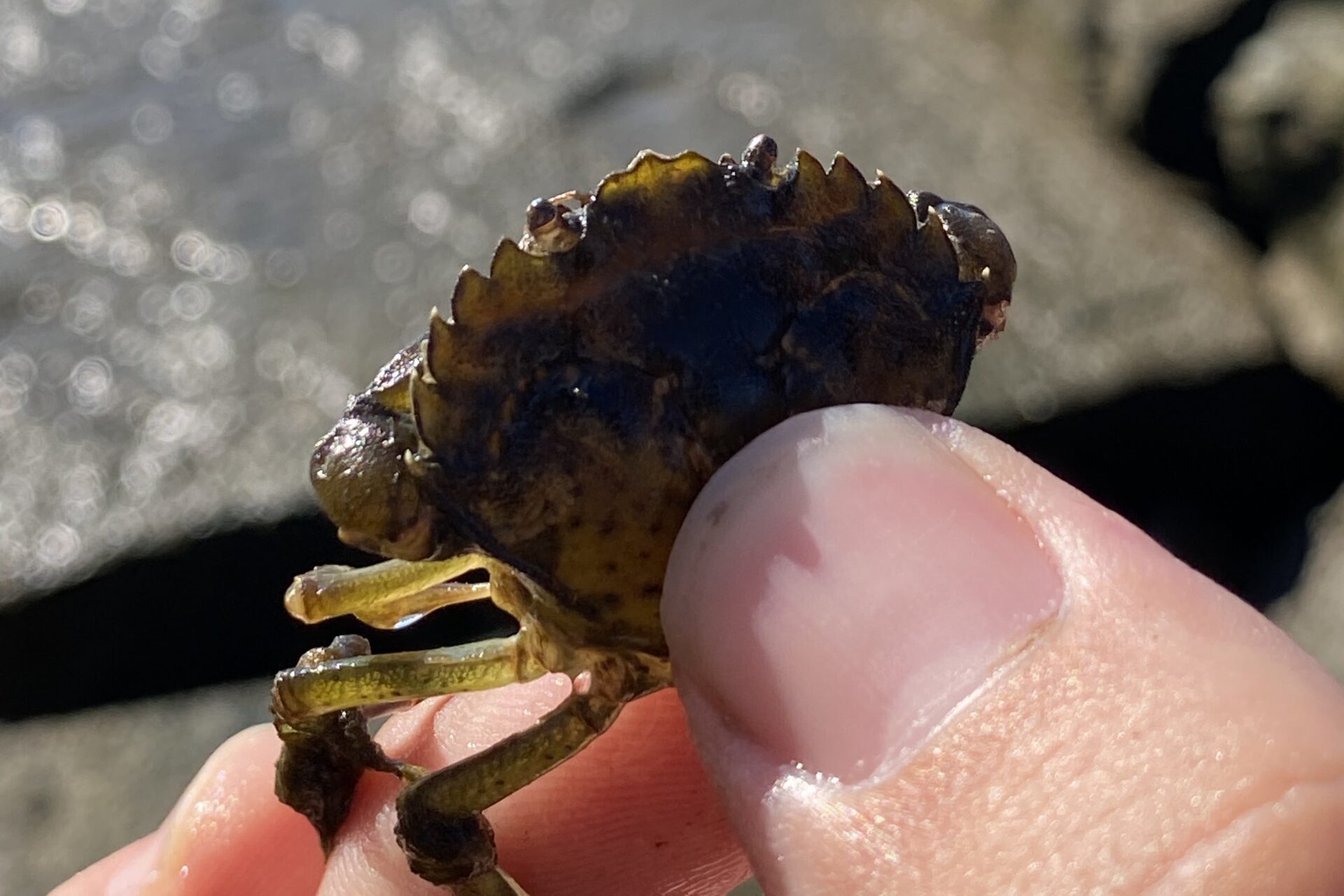Max Size: 10 cm (carapace width) (4 inches)
Habitat: Variety of shorelines including rocky riprap, beaches, tidal marshes and sandflats. Native to European shorelines, introduced to a variety of locations across the world.
Diet: Bivalves (clams, mussels, oysters), worms, small crustaceans and other invertebrates. Research also indicates the ability to take up nutrients through their gills.
Fun Facts:
- Green crabs are native to European coastlines, but are an introduced species along the east coast of North America and several other locations across the world.
- Green crabs are considered invasive because of the impact they have on environments they are introduced to. They negatively impact the populations of bivalves, other crab species and submerged aquatic vegetation like cordgrass and eelgrass.
- Green crabs can be best identified by the presence of five marginal spines (that look like small spikes) on their carapace located on either side of their eyes.
- Green crabs were likely introduced to Atlantic shorelines from transatlantic shipping routes through ballast water or ship fouling, like many aquatic species.
- Blue crabs, a native species to the Hudson River Estuary, help environments resist green crab invasions–adult blue crabs are up to four times larger than green crabs and are known to eat this smaller introduced species.
- Some conservationists are trying to figure out how to create demand for green crabs in the culinary industry to motivate the removal of this species.
